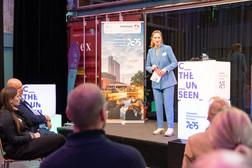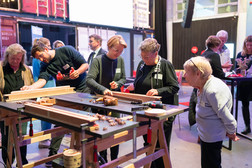Chemnitz holds the title of European Capital of Culture in 2025 and is presenting itself internationally in close cooperation with the German National Tourist Board (GNTB). Together with Chemnitzer Tourismus und Marketing GmbH (CTM), the GNTB will be promoting the cultural highlights and events around the world from 2024, putting the spotlight on the transformation of the Saxon city and its region from an industrial metropolis to a vibrant cultural region.
In the run-up to the Capital of Culture year, the GNTB and Chemnitz 2025 organised a welcome tour to get international tourism partners and the media excited about the major event. In Zurich, Vienna and Prague, audiences were treated to special evenings of bandoneon and tango music. Jürgen Karthe from the Saxon Mozart Society is one of the few who has mastered the instrument. What does Argentinian tango have to do with Chemnitz? Carl-Friedrich Uhlig from Chemnitz invented the concertina, the predecessor of the bandoneon, which was built in Saxony and exported to Argentina. The tango duo Evi Schilde and Bernd Thiele danced to it. The chefs Angelique Fleischer and Claudia Lappöhn provided the guests with culinary delights from the Ore Mountains. Pia Hackner (Makerhub Schneeberg) and Wilhelm Reichel from Atelier Hängengebleiben introduced media representatives in Switzerland, Austria and the Czech Republic to the production of traditional shoe horns.
The events offered exclusive insights into the recently published programme and serve as a networking platform for partners and media representatives who want to promote Chemnitz 2025.
The Capital of Culture year will open on 18 January 2025. You can find the entire programme at chemnitz2025.de/programme.


















































